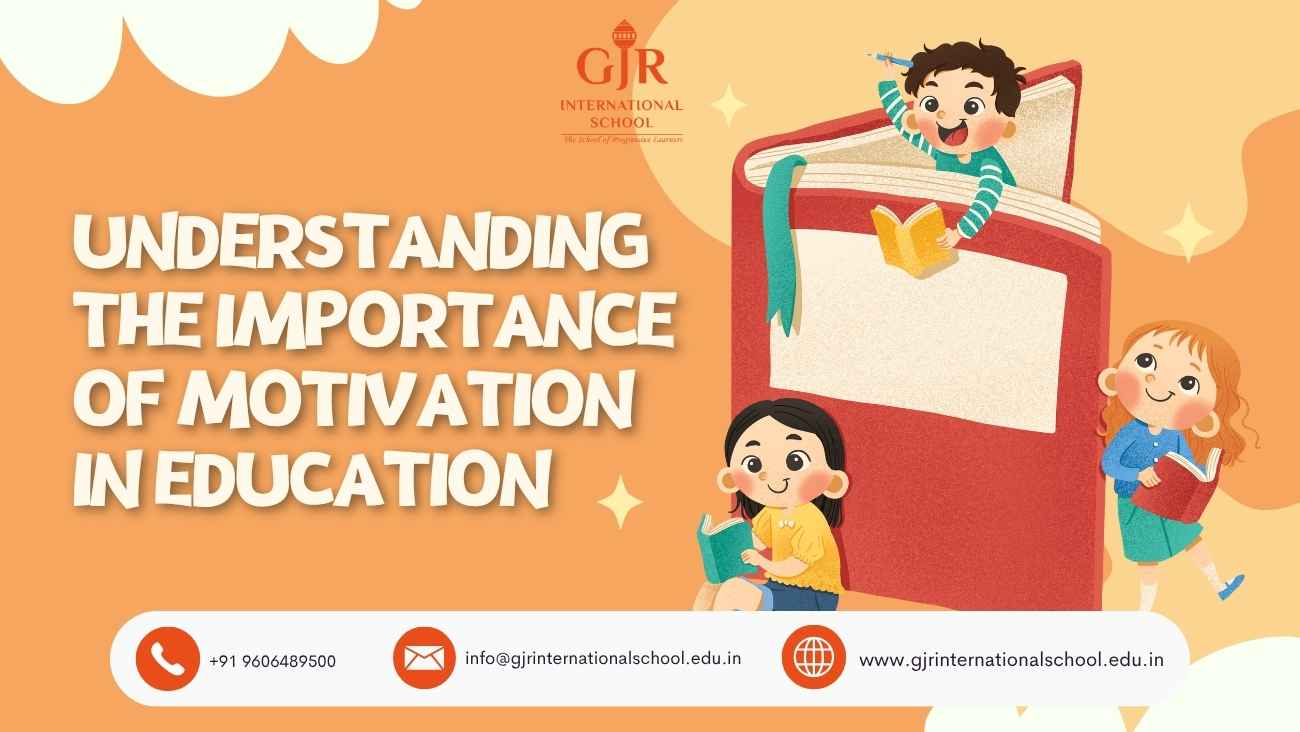Understanding the Importance of Motivation in Education

Education is more than just attending classes, memorizing facts, and taking exams. It’s a journey of discovery, growth, and personal development. But what fuels this journey? What makes a student eager to learn, persist through challenges, and strive for excellence? The answer, unequivocally, is motivation.
What is Motivation?
At its core, motivation is the driving force behind all our actions. In the context of education, it refers to the internal and external factors that stimulate enthusiasm and persistence to pursue a course of action. It’s that inner spark that makes a student want to understand a complex concept, practice a difficult skill, or complete a challenging assignment, even when faced with obstacles.
Significance of Motivation in a Student's Life
Motivation plays a pivotal role in shaping a student’s entire educational experience and future trajectory. A motivated student is more likely to:
- Engage actively: They participate in discussions, ask questions, and seek deeper understanding.
- Persevere through challenges: Difficult subjects or setbacks don’t deter them; instead, they see them as opportunities for growth.
- Develop a love for learning: Education becomes an enjoyable pursuit rather than a chore.
- Achieve higher academic results: Consistent effort and engagement naturally lead to improved performance.
- Develop crucial life skills: Motivation fosters discipline, resilience, and problem-solving abilities that extend far beyond the classroom.
Motivation acts as a powerful catalyst for both comprehension and achievement. When a student is motivated:
- Understanding Deepens: They don’t just skim the surface. Their curiosity drives them to explore concepts thoroughly, connect ideas, and build a robust understanding of the subject matter. When a topic genuinely interests them, their brains are more receptive to absorbing and retaining information.
- Performance Soars: Motivation directly correlates with effort and persistence. A highly motivated student will dedicate more time to studying, practice diligently, and seek help when needed. This consistent effort naturally translates into improved grades, better test scores, and a stronger overall academic record. It’s not just about innate ability; often, it’s the sheer will to succeed that makes the difference.
Types of Motivation: Self-Motivation & Extrinsic Motivation
Motivation isn’t a monolithic concept; it comes in different forms:
- Intrinsic Motivation (Self-Motivation): This is the most powerful and sustainable form of motivation. It stems from internal desires, interests, and personal satisfaction. A self-motivated student learns because they genuinely enjoy the process, are curious about a subject, or find personal meaning in their studies. They are driven by the inherent pleasure of learning, the satisfaction of mastering a new skill, or the desire for personal growth.
- Extrinsic Motivation: This type of motivation comes from external rewards or consequences. Examples include good grades, praise from teachers or parents, scholarships, recognition, or avoiding punishment. While extrinsic motivators can be effective in the short term, relying solely on them can diminish a student’s intrinsic desire to learn. The goal is often to use extrinsic motivators strategically to help foster intrinsic motivation.
Ways to Motivate a Kid at Home & School
Fostering motivation is a shared responsibility between parents and educators.
At Home:
- Create a Supportive Learning Environment: Provide a quiet study space, ensure adequate sleep, and nutritious meals.
- Show Genuine Interest: Ask about their day, what they learned, and what challenged them.
- Encourage Curiosity: Provide books, documentaries, and opportunities to explore their interests.
- Celebrate Effort, Not Just Results: Acknowledge their hard work and perseverance, even if the outcome isn’t perfect.
- Set Realistic Goals: Help them break down large tasks into smaller, manageable steps.
- Be a Role Model: Show your own enthusiasm for learning and personal growth.
- Limit Distractions: Minimize screen time and create a conducive atmosphere for focus.
- Make Learning Engaging: Use interactive activities, real-world examples, and diverse teaching methods.
- Foster a Positive Classroom Environment: Promote respect, collaboration, and a sense of belonging.
- Provide Constructive Feedback: Help students understand where they can improve and what steps to take.
- Recognize and Reward Effort: Acknowledge progress and achievement, both individually and collectively.
- Connect Learning to Real Life: Help students see the relevance of what they’re learning to their own lives and future aspirations.
- Empower Student Choice: Whenever possible, give students some autonomy in their learning.
- Build Strong Teacher-Student Relationships: A caring and supportive teacher can significantly impact a student’s motivation.
Conclusion
Motivation is the bedrock of effective education. It transforms passive learners into active participants, challenges into opportunities, and classrooms into vibrant hubs of discovery. By understanding its different facets and actively working to cultivate it, both at home and in school, we can empower students to unlock their full potential, not just academically, but as lifelong learners and engaged individuals ready to face the world. Let’s strive to ignite that inner spark in every student, making their educational journey a truly fulfilling and successful one.
